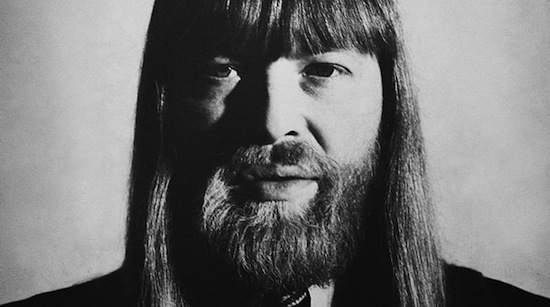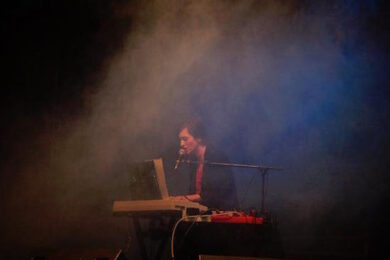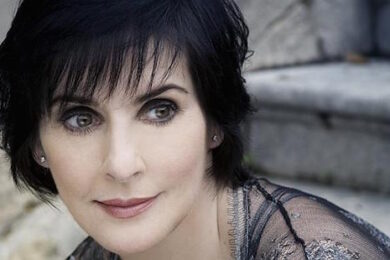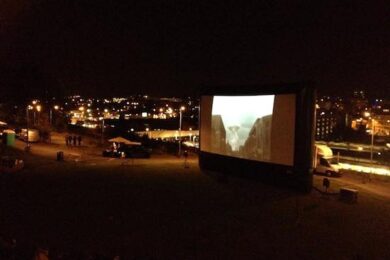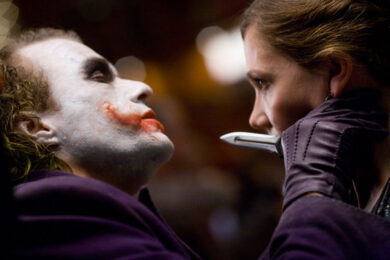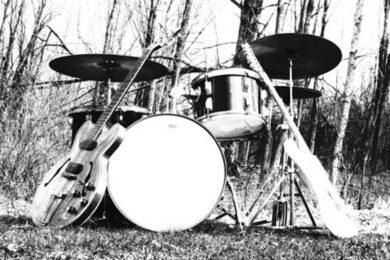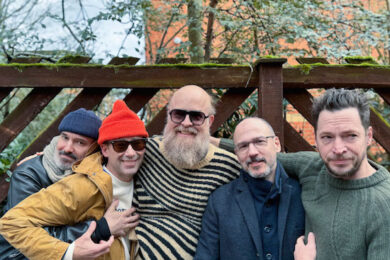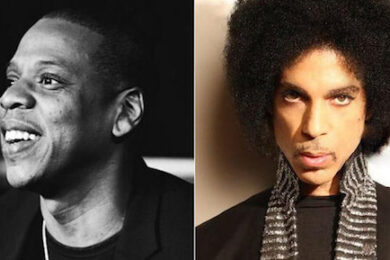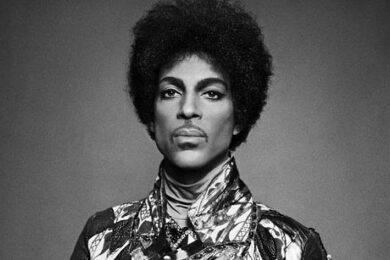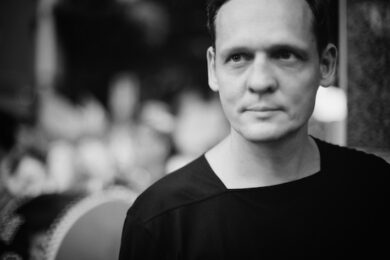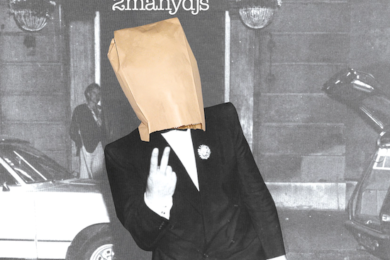"Without Conny… I don’t know," sighed Klaus Dinger in one of the last interviews before his death. Neu!’s drummer knew. Without Conny Plank, it’s possible that his studio partnership with Michael Rother might have petered out, for lack of encouragement or simply for a lack of guidance as to how to make the best of what technology was available in a 1970s studio, particularly to impecunious experimental musicians.
The name "Conny Plank" is stamped all over the Krautrock canon. To call Krautrock a "movement" is, of course absurd, given that many of the groups were unaware of each others’ existence at the time and in any case moving in very divergent directions. Conny Plank, however, is a strong common factor. He was, in many ways, Krautrock’s midwife. As well as Neu!, early Kraftwerk, Can, Guru Guru and Cluster all benefited from his production work.
He wasn’t simply a jobbing producer, indifferent to whoever was jamming away behind the glass, merely adding polish to their raw material however. He was a creative contributor, whose genius was an enabler of otnher people’s ideas, or the technical means whereby they achieve unheard-of sound objectives. He not only intimate with the equipment but was forever finding ways of modifying the machinery in real time and space to create effects that sound decades in advance of commercially available solutions. When samplers arrived, they held no surprise for Plank – he’d been "sampling" for years, albeit manually, isolating and looping notes, playing them through the console. He created huge tape loops that would stretch the length of the studio and played phase analogue machines simultaneously by hand. He brought colour, clarity and depth to his productions; which was vital in the case of Krautrock which revealed itself through its textures and spatial relations.
Sadly, the vivacious, hugely generous, highly opinionated, genial bear-like genius of a man that was Plank died in 1987, aged just 47. Who’s That Man? is a four CD tribute to a pioneer whose name is familiar to any music aficionado as a mark of quality assurance but about whose life and work too little is known. It covers the range of his work, from the 70s, and his productions of Neu!, La Düsseldorf and Dieter Möbius, through to his Neu Deutsche Welle days, including helping D.A.F. achieve their immersive electro pop. The last CD is a live recording he made in 1986, in South America with Dieter Möbius and Arno Steffen, playing material from his 1983 album Ludwig’s Law. As Möbius recalls, it was an incredibly effervescent performance, reminiscent of Liaisons Dangereuses in places, with barely an ounce of Teutonic stiffness about it, typifying the spirit of a man who believed that "craziness is holy".
"We mixed it live," Möbius recalls. "We had a 16 track machine on the road with us. We were 600 kilos overweight on every journey we made. The CD is taken from a cassette which I found by accident at a house I used to live in. They digitilised it – but originally, it was recorded with a single microphone. We had big audiences, bigger and bigger – from Argentina up to Mexico. But of course, this was nearly the end for Conny – the time he fell ill."
Möbius first recorded with Plank when he was part of Kluster (along with Hans-Joachim Roedelius and Conrad Schnitzler). The session came about thanks to an idealistic young organist and cantor named Oskar Gottlieb Blarr. It was at his church, in December 1969 that they recorded their debut albums, Klopzeichen and Zwei Osterei. As a condition of being allowed to record under church auspices, spoken word Christian text was later added to the sides they cut.
"We had never heard of him before," says Möbius. "At this time, this was just a normal studio where he worked, not his studio, so he was just working as a normal sound engineer. But of course we did manage to record the two albums in one night – it was organised by a church, and we were just happy to record two albums."
Plank already had a distinguished recording career at this stage however. He is often said to have recorded Marlene Dietrich in the 1960s but his son Stephan, who is currently putting together a documentary about his late father, is sceptical as to whether this actually took place. What is certain is that he worked for titans of modern composition Mauricio Kagel and Karheinz Stockhausen. He produced a stack of tapes with the pair which are in Stephan’s possession and which, he suggests, may yet see the light of day. "As I’m going through the archive at the moment, I found quite a lot of 24-tracks with Stockhausen. His name is on them, so there’s going to be Stockhausen material on them. But I don’t know what it is. We’re going to meet up with Simon Stockhausen [his son] and we’re going to digitise the material, listen to it and decide if it’s worth releasing. It’s five 24-track tapes, so they were obviously serious about something."
Despite his unique facility with studio machinery, Plank found his joy in the artists – he had to click with them, as people. "I think it’s kind of funny; in Germany we have the Pop and Rock Museum, and they have the whole Can studio in there," says Stephan. "But from Conny’s studio, they have the kitchen. Because this is the place that Conny would work, with people."
"He liked to work with people he liked," says Moebius. "And so he worked with many different people and in many different styles. Gianna Nannini [1980s Italian singer-songwriter] was very different from Kraftwerk – it was more that he liked the people. Let them have their vision but push the direction in which they went – the sounds he produced were very unusual for the time – samples, loops. He had to do some commercial things [Scorpions, Clannad]. He had some fun working with Annie Lennox and Ultravox and with that money, he could afford to work for free with us! In the early 1970s he had some big jobs – Kraftwerk fooled him in a way, not going on working with him when they had some success."
Kraftwerk did indeed snub Plank once they made the decision to take everything in-house. However, Plank himself famously knocked back U2, declaring in a terse manner that does him eternal credit, "I cannot work with this singer."
"I was very young when this happened, but I know the story," says Stephan. "They were in our studio, sitting in our kitchen, talking about production. My father said, ‘Well, I am going to think about it.’ Then they went to this festival, and Bono went on stage and said, ‘Hello, we are U2, please give a big hand to our new producer, Conny Plank.’ And that’s when my father decided to leave. But I am not sure if this story is true, it is the way I was told it. There are a lot of tall tales about my father."
Although too young to appreciate the radical nature of his father’s music while he was alive having been just 13 when he died, Stephan has fond memories of the studio-cum-family-home they shared. The house, situated in the tiny town of Hütchsenhausen, just outside of Cologne, was full of fascinating, elaborate, delicate set-ups. The equipment, may have been fascinating but it was verboten for young hands to touch, as everything had been carefully placed to achieve a precise effect. "He was touring from time to time and he was recording outside of Germany, but otherwise he was there all the time. The music was constantly playing and I would listen to the music, as it would be around me. Growing up in the recording studio, well, you have the music and this is the soundtrack to your youth."
As Plank’s career progressed, Krautrock fell away and studio technology altered apace but this did not faze him. He found new people to work with, a new generation of curious 80s electropoppers and avant-garders including Ultravox, Eurythmics, Echo & the Bunnymen, Les Rita Mitsouko and Einstürzende Neubauten. Part of his durability was that there was nothing date-stamped, or signature about his technique.
"It’s really funny that you mention this, because I was looking for this, as well," says Stephan. "Does he have a signature sound? When you listen to Rick Rubin albums, you know it’s Rick Rubin. The funny thing is that some of the bands he worked with were looking for a producer, and their process was to go to their collections and look through the records. Some of the bands tell me now that a third of their record collection was produced by Conny Plank and they didn’t realise it at the time."
Towards the end of his life, Plank complained about the lack of range, of "high" and "low" in new productions – already, even in the late 80s, the dominance of "compression" was encroaching. How would he have coped in today’s studio surroundings, I wonder?
I think he would love the technology at the moment," insists Stephan. "He bought the first McIntosh to record a bass player who was in New York, in his own studio. But it didn’t work – this was 1986 – and he got really angry, because he was promised that it would work, but he couldn’t use it. I think he was really keen on having these technological possibilities, because what they give you is a lot of chance to work – but you have to have the possibility in yourself to make decisions. Nowadays, what is getting lost when I look at modern productions, you have 300 tracks in there. Nowadays, the musicians work just this way, so they postpone the decisions.
"With my father it was different. You know, when they did the first D.A.F. album on MUTE Daniel Miller made a deal with my father to record the album in four days. So my father spent the first day talking to Robert Görl and Gabi Delgado [of D.A.F.] discussing music. Daniel said, ‘Well, they’re going to record for the next three days.’ And the next day, they spent talking about music, eating good food and being very philosophical about it and didn’t record anything. Daniel was getting very nervous at that point. On the third day, when they were really supposed to start the album, they talked some more about music and went for a long walk and nothing was recorded. Now, Daniel was really afraid of losing his money. On the fourth day, in the morning, they had a really nice breakfast, went to the studio and recorded the album. Daniel Miller himself told me this story. He thinks it’s kind of funny."

